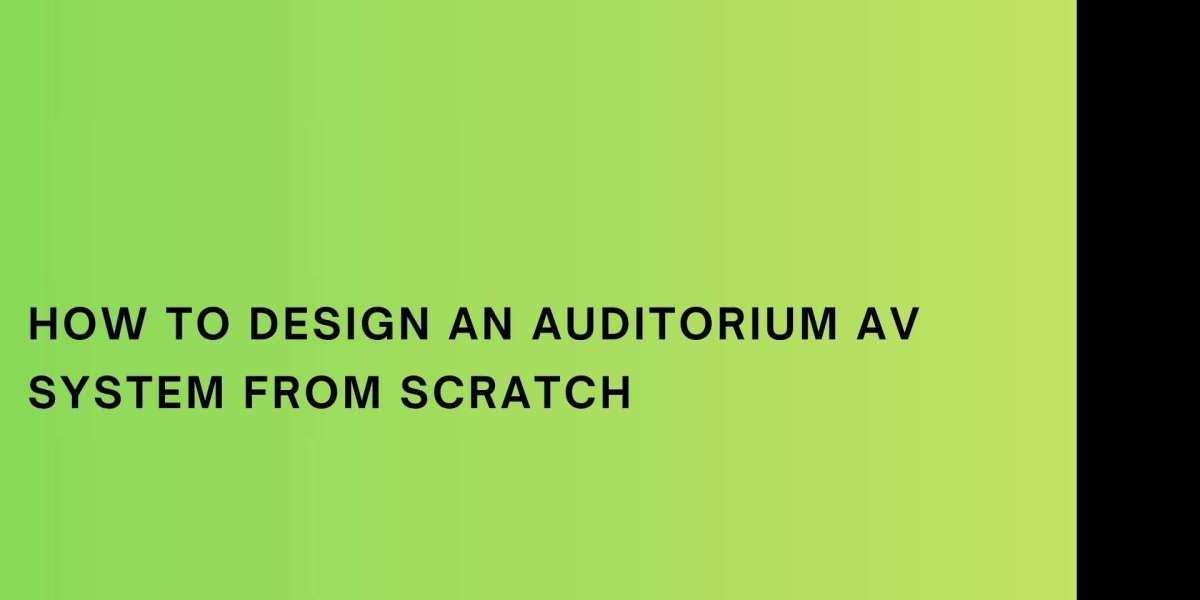Designing an auditorium AV system from the ground up requires careful planning, technical insight, and the right tools to bring everything together. Whether you are working on a corporate auditorium, a university lecture hall, a performance venue, or a government space, the end goal is the same—to create a seamless audiovisual experience that enhances communication, engagement, and performance.
Enter XTEN-AV, the industry-leading cloud-based AV design platform that enables integrators to streamline every step of the design process. From intelligent system schematics and signal flows to automated floor plans, XTEN-AV makes complex auditorium AV design faster, more accurate, and more collaborative. It simplifies the planning and documentation of AV systems so professionals can focus on what truly matters—delivering an exceptional user experience.
In this blog, we walk through the essential steps to design an auditorium AV system from scratch and highlight how XTEN-AV plays a key role in making your project successful.
Step 1: Understand the Space and Its Purpose
Before you begin selecting components or drawing layouts, it is crucial to understand the goals of the space.
Ask the right questions
What type of events will be hosted?
How many people will the auditorium seat?
Will the space support hybrid events or live streaming?
What are the acoustic and lighting conditions?
This discovery phase shapes every technical decision that follows. With XTEN-AV, you can create and modify auditorium layouts digitally while keeping track of technical requirements specific to each event type.
Step 2: Determine the Display Requirements
Visual clarity is critical in any auditorium setting. The audience must be able to see presentation materials, video content, or live feeds clearly from every seat.
Considerations
Screen size and aspect ratio
Distance from the furthest seat
Ambient lighting conditions
Projectors vs direct-view LED displays
XTEN-AV offers built-in calculators for screen size and viewing angles, helping you make data-driven decisions based on the room dimensions and seating layout.
Step 3: Design the Audio System for Coverage and Clarity
Audio performance is often more complex than video. In large auditoriums, sound must be evenly distributed, clear, and free from echo or distortion.
Key elements
Speaker types and placement (line arrays, ceiling speakers, etc.)
Microphone selection (wireless handhelds, goosenecks, boundary mics)
DSPs for processing and echo cancellation
Assistive listening systems for ADA compliance
With XTEN-AV, you can easily map speaker zones, connect signal paths, and select the right equipment for consistent coverage. The platform allows you to create detailed audio signal flow diagrams for both design and installation teams.
Step 4: Select the Right Control System
A control system ties together all audiovisual components and allows users to manage them effortlessly. For auditorium AV systems, intuitive operation is critical.
Control features to include
Touch panels or wireless tablets for system operation
Preset modes for lectures, performances, and video calls
Integration with lighting, shades, and HVAC systems
Remote control and troubleshooting access for IT staff
XTEN-AV helps you incorporate control system components into your design and plan for the required cabling, power, and mounting options.
Step 5: Plan for Hybrid and Streaming Capabilities
With hybrid events becoming a permanent standard, your AV system should include live video capture and streaming support.
Components to consider
PTZ cameras with multiple presets
Video switchers for managing live feeds
Streaming encoders compatible with YouTube, Zoom, or Teams
High-quality microphones and audio interfaces
Networked storage for recording and archiving content
XTEN-AV enables you to visualize and route all video and streaming paths accurately, ensuring that your system supports real-time and recorded content distribution.
Step 6: Design Infrastructure and Cabling
The AV system is only as strong as the infrastructure that supports it. Proper planning for cabling, power, and rack space is essential.
Infrastructure must-haves
Dedicated AV rack rooms with cooling and ventilation
Cable trays and conduits sized for future growth
Fiber or CAT6A for high-bandwidth video and networked audio
Surge protection and power distribution units
XTEN-AV makes infrastructure planning simple with its automated rack layout builder, cable schedule generation, and detailed BOMs that include part numbers and specifications.
Step 7: Document the System
One of the most important but often overlooked steps in auditorium AV design is documentation. A well-documented system makes installation smoother and future maintenance easier.
What to include
Floor plans with equipment placement
Signal flow diagrams
Rack elevations
Bill of materials with pricing and part numbers
System operation manuals
XTEN-AV automates documentation at every stage. Once your design is complete, you can generate client-ready proposals, installation diagrams, and technical documentation in minutes.
Step 8: Test and Train
Once the system is installed, it is time to test every component and train staff on daily operation.
Testing checklist
Test all audio and video sources and outputs
Calibrate microphones and speakers
Verify streaming workflows
Check control panel presets and automation sequences
Training tips
Create simple user guides and cheat sheets
Conduct in-person walkthroughs for IT and operations staff
Provide remote support and live troubleshooting for the first few events
Ongoing training ensures the system is used to its full potential and minimizes support calls.
Final Thoughts
Designing an auditorium AV system from scratch is a complex but rewarding process. It requires a blend of technical knowledge, future planning, and precise execution. With increasing demands for hybrid readiness, seamless control, and clear documentation, AV integrators need modern tools to stay ahead.
XTEN-AV delivers everything you need to succeed—AI-powered design automation, real-time collaboration, detailed documentation, and accurate cost estimation. It is the ultimate platform for professionals who want to raise the standard of auditorium AV design.
By following the steps outlined in this blog and leveraging the power of XTEN-AV, you can deliver auditorium AV systems that are reliable, scalable, and ready for the future. Whether it is a university, theater, government facility, or corporate venue, your design can truly set the stage for impactful communication and engagement.
Read more: https://soundsightav.odoo.com/blog/our-blog-1/top-software-for-auditorium-digital-signage-systems-21














